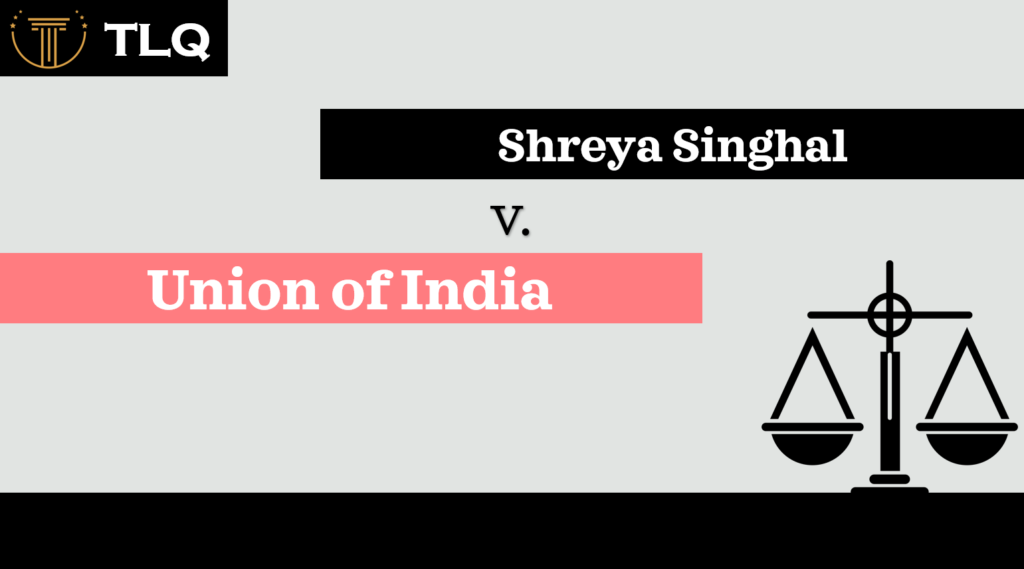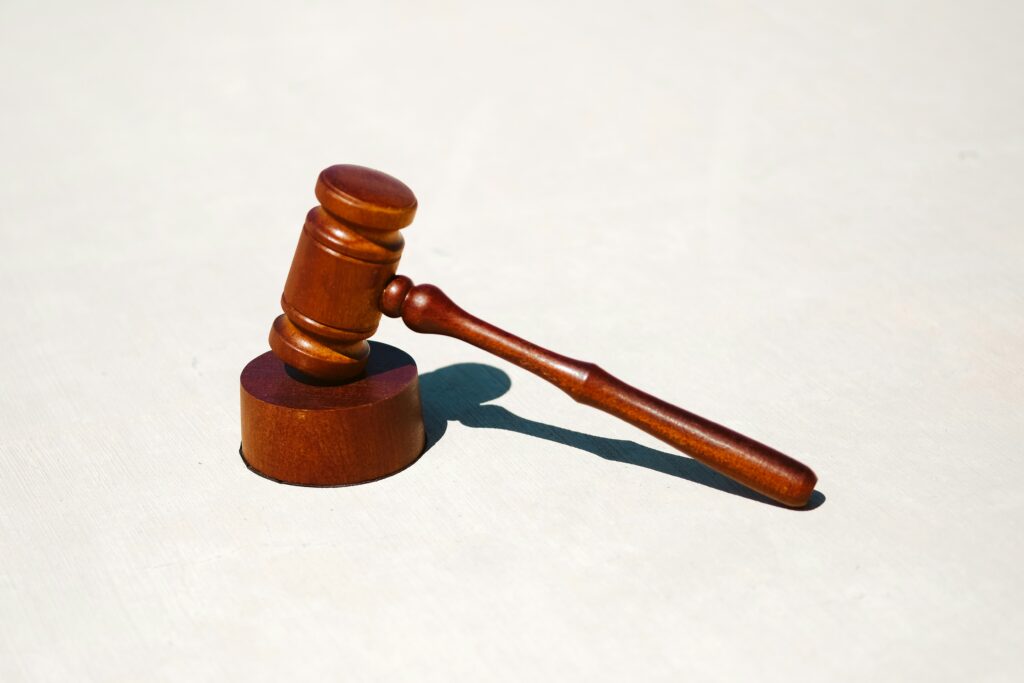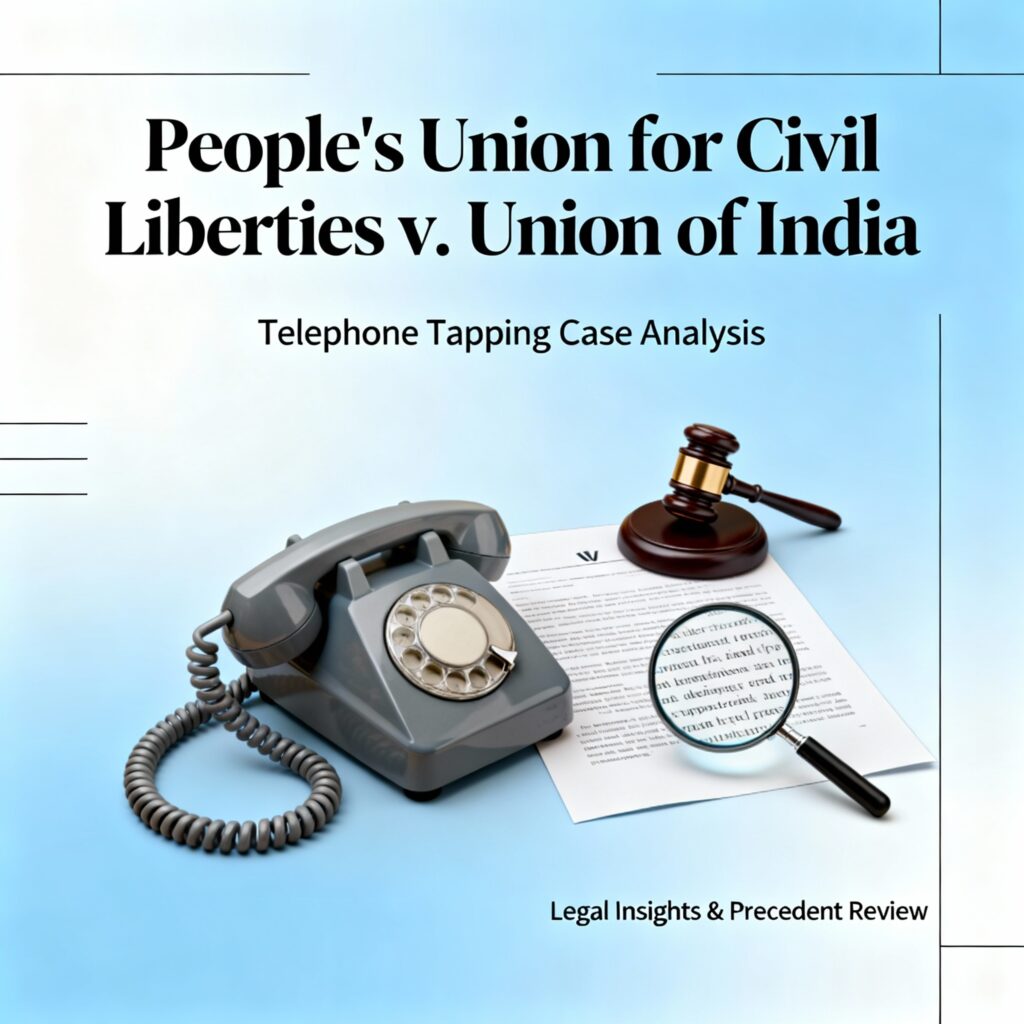Published On: 23rd December, 2023
ABSTRACT
On December 11, 2013, the Supreme Court of India in Suresh Kumar Koushal & Others v. NAZ Foundation & Others 1 capsized the Delhi High Court’s decision and upheld the validity of Section 377 of the Indian Penal Code, 1860(IPC), rejecting the repliers’ claims that the section violates papers 14, 15, 19(1) (a) ‐( d) and 21 of the Constitution of India, 1950. (Hereinafter the Constitution). These prayers are directed against an order dated July 2, 2009, by which the Delhi High Court’s Division Bench allowed the writ solicitation filed by NAZ Foundation – replier No. 1 herein as a Public Interest Action (PIL) challenging the indigenous validity of Section 377 of the Indian Penal Code. Replier No. 1 is a Nongovernmental Organization (NGO) that works in the field of HIV/ AIDS intervention and forestalment and is registered under the Societies Registration Act, 1860. In agreement with integrationist policy, it has concentrated its sweat on” Men who have coitus with Men MSM or homosexuals or gays.”
INTRODUCTION
The Supreme Court of India on December 11, 2013. In Suresh Kumar Koushal & Another v. NAZ Foundation & Others[1],1 reversed the decision of the Delhi High Court and again upheld the validity of Section 377[2] of the Indian Penal Code, 1860(IPC) negating the contentions of the replies that the below section violates papers 14, 15, 19(1) (a)-( d) and 21 of the Constitution of India, 1950(hereinafter the Constitution). These prayers are directed against the order dated July 2, 2009, by which the Division Bench of the Delhi High Court allowed the writ solicitation filed by NAZ Foundation – replier No. 1 herein, by way of Public Interest Action (PIL) challenging the indigenous validity of Section 377 of IPC. Replier No. 1 is a Nongovernmental Organization (NGO) registered under the Societies Registration Act, 1860 which works in the field of HIV/ AIDS intervention and forestallment. Its work has concentrated on targeting “Men who have coitus with Men (MSM) or homosexuals or gays” in consonance with the integrationist policy.
Professing that its sweats have been oppressively bloodied by the discriminative stations displayed by state authorities towards sexual nonages, MSM, lesbians, and transgender individualities and that unless tone- respect and quality are restored to these sexual nonages by doing down with discriminative laws similar to Section 377 IPC it’ll not be possible to help HIV/ AIDS, NAZ Foundation filed WP( C)No.7455/2001 before the Delhi High Court impleading the Government of NCT of Delhi, Delhi Commissioner of Police, Delhi State Aids Control Society, National Aids Control Organization( NACO) and Union of India through Ministry of Home Affairs and Ministry of Health and Family Welfare, and supplicated for entitlement of a protestation that Section 377 of IPC to the extent it’s applicable to and penalizes sexual acts in private between subscribing grown-ups is violative of Articles 14[3], 15, 19( 1)( a)-( d) and 21 of the Constitution. Replier No. 1 further supplicated for entitlement of an endless instruction restraining the Government of NCT of Delhi and Commissioner of Police, Delhi from administering the vittles’ of Section 377 of IPC in respect of sexual acts in private between subscribing grown-ups.
ISSUES
The major issues that surfaced before the Court for its attention and consideration involved the violation of Fundamental Rights under Articles 14, 15, and 21 of the Constitution of India
- Whether Section 377 violates any of the vittles of Part III of the Constitution of India and thus whether it’s naturally valid or not?
- Whether Section 377, so far criminalizes consensual sexual exertion of two grown-ups of the same coitus in private, is violating Composition 21(Right to life and particular liberty) guaranteed by the Constitution of India.
FACTS OF THE CASE
The case concerns the constitutionality of Section 377 of the Indian Penal Code which was legislated during the British administration in India in 1860. Section 377 created an offence of freely having carnal intercourse “against the order of nature” with any man, woman, or beast, punishable by over ten times imprisonment or a forfeiture. Although the provision appears to be neutral on its face, it was argued to have a discriminative effect on LGBT persons, particularly homosexual men.
In 2001 the NAZ Foundation – an anon-governmental organization working in the field of HIV/ AIDS intervention and forestallment – filed a writ solicitation before the Delhi High Court seeking a protestation that Section 377, to the extent that it penalised sexual acts in private between subscribing grown-ups, violated the India Constitution, specifically, Articles 14( equivalency before the law), 15(non-discrimination), 19( 1)( a)-( d)( freedom of speech, assembly, association, and movement) and 21( right to life and particular liberty). The Naz Foundation argued that the law had a discriminative effect because it was generally used against homosexual conduct, thereby criminalizing exertion rehearsed more frequently by homosexual men and women. This was said to jeopardize HIV/ AIDS forestalment styles by driving homosexual men and other sexual nonages underground. It was further argued that, as private consensual relations were defended under Composition 21 of the Constitution, Section 377 was invalid as there was no compelling state interest to justify the curtailment of abecedarian freedom. The Naz Foundation also argued that Section 377 violated Composition 14 on two grounds first, because it was unreasonable and arbitrary to criminalize non-procreative sexual relations, and secondly, because the legislative ideal of penalizing “unnatural” acts had no rational nexus with the bracket between procreative and non-procreative sexual acts. In 2004, the High Court dismissed the writ solicitation on the grounds that only purely academic issues had been submitted which couldn’t be examined by the court. It did the same in relation 2 to a posterior review solicitation. The NAZ Foundation challenged both orders and the writ solicitation were remitted for a fresh decision in 2006. In its 2009 decision, the High Court set up in favor of the NAZ Foundation and accepted its arguments that consensual same-coitus sexual relations between grown-ups should be decriminalized, holding that similar criminalization violated the indigenous rights to life and particular liberty, equivalency before the law and non-discrimination. In reaching its decision, whilst the court placed a great deal of emphasis on domestic judgments, the court also reckoned on relative law in reaching its decision, pertaining to judgments from colorful authorities including the European Court of Human Rights, the United Kingdom, the Republic of Ireland, South Africa and the USA. The court also reckoned upon several progressive transnational legal fabrics including the Yogyakarta Principles and the 2008 protestation of Principles of Equality produced by the Equal Rights Trust as well as several reports and documents demonstrating the discriminative effect of Section 377. In its logic, the High Court stated that Section 377 “grossly violates (homosexual individualities’) right to sequestration and liberty embodied in Composition 21 insofar as it criminalizes consensual acts between grown-ups in private”.
The court also held that “Section 377[4] criminalizes the acts of sexual nonages, particularly men who have coitus with men. It disproportionately affects them solely on the base of their sexual exposure. The provision runs athwart to the \indigenous values and the notion of mortal quality which is considered to be the foundation of our Constitution”.
LAW
DOMESTIC LAW
- Constitution of India 1949 Composition 14[5](Equality before the law); Composition 15(Prohibition of demarcation on grounds of religion, race, estate, coitus or place of birth); Composition 19(Protection of freedom of speech, assembly, association and movement and others); and Article 21(Protection of life and particular liberty);
- Indian Penal Code 1860 Section 375[6](force); Section 376(discipline for rape); Section 377(Unnatural offences).
INTERNATIONAL LAW
- Composition 12 of the Universal Declaration of Human Rights 1948
- Article 17 of the International Covenant on Civil and Political Rights 1966
- European Convention on Human Rights 1950
- European Convention on Human Rights 1950
LEGAL ARGUMENTS
APPELET’S ARGUMENTS
The Petitioners’ denied that Section 377 was unconstitutional and made a variety of cessions as to why it was not
- The High Court committed a severe error by declaring Section 377 to violate Articles 14, 15, and 21 of the Constitution as it ignored the lack of any foundational data in the Respondent’s writ which would be necessary for pronouncing upon the constitutionality of any statutory provision. The talkie substantiation supplied in its place wasn’t a base for chancing that homosexuals were singled out for discriminative treatment by the law[7].
- The statistics incorporated in the Respondent’s solicitation were inadequate for chancing that Section 377 negatively affected the control of HIV AIDS and that decriminalization would reduce the number of similar cases. The Petitioners also argued that the data presented was manufactured and fraudulent.
- Regardless of the gender of the individuals engaging in the conduct, Section 377 includes voluntary acts of carnal intercourse. It is completely gender-neutral. As no specific class is targeted by the law, no bracket has been made, thus rendering the finding of the High Court that it offended Composition 14 to be without base.
- Section 377 doesn’t violate the right to sequestration and quality under Composition 21 and the right to sequestration doesn’t include the right to commit any offence as defined under Section 377 or any other section.
- If the protestation were approved, India’s social structure and the institution of marriage would be detrimentally affected and it would beget young people to become tempted towards homosexual conditioning.
- Courts by their veritable nature shouldn’t take over the task of legislating which should be left to Parliament. The High Court was doubtful whether it was ramifying the law or reading it down and, as long as the law is in the enactment book, there’s an indigenous presumption in its favor. Whether a law is moral or immoral is a matter that should be left to Parliament to decide.
RESPONDENT’S ARGUMENTS
The Respondents submitted:
Section 377 targets the LGBT community by criminalizing a nearly held particular characteristic similar to sexual exposure. By covering within its dimension consensual acts between persons within the sequestration of their homes, it’s discordant to the right to 4 equivalences. Sexual rights and fornication are mortal rights guaranteed under Composition 21. Section 377 thus deprives LGBT of their full moral citizenship.
- The criminalization of certain conduct which are an expression of the core sexual personality of homosexual men makes them out to be culprits with injurious consequence injuring their mortal quality. As Section 377 outlaws’ sexual exertion between men which is by its very nature penile and non-vaginal, it impacts homosexual men in a deep position and restricts their right to quality, personhood and identity, equivalency, and right to health by criminalizing all forms of sexual intercourse that homosexual men can indulge in.
- Sexual closeness is a core aspect of mortal experience and is important to internal health, cerebral good, and social adaptation. By criminalizing sexual acts engaged in by homosexual men, they’re denied this mortal experience while the same is allowed for heterosexuals.
- The Court should take account of changing values and the temporal reasonableness of Section 377. The Constitution is a living document and it should remain flexible to meet recently arising problems and challenges. The station of Indian society is fast changing and the acts which were treated as an offence should no longer be made corrective.
- The right to equivalency under Composition 14 and the right to quality and sequestration under Composition 21 are connected and must be fulfilled for other indigenous rights to be truly effectuated.
- The difference between stag acts in private and public is recognized in Section 294[8]. It should be read in light of indigenous vittles’ which include the right to be let alone.
- Section 377 is impermissibly vague, delegates policy-making powers to the police, and results in the importunity and abuse of the rights of LGBT persons. Petitioners handed substantiation of wide abuse and importunity (citing judicial substantiation and NGO reports).
- Section 377 doesn’t lay down any principle or policy for exercising discretion as to which of all the cases falling under the astronomically phrased law may be delved. It’s silent on whether the offence can be committed within the home.
- Criminalization increases smirch and demarcation and acts as a hedge to HIV forestalment programs. It thwarts health services by precluding the collection of HIV data, impeding dispersion of information, precluding the force of condoms; limiting access to health services, driving the community underground, precluding exposure of symptoms, creating an absence of safe spaces leading to parlous coitus.
JUDGEMENT
The panel of two Supreme Court judges deciding the case allowed the appeal and capsized the High Court’s former decision, chancing its protestation to be “fairly unsustainable”. The Supreme Court eventually set up that Section 377 IPC doesn’t violate the Constitution and dismissed the writ solicitation filed by the Repliers.
Regarding its power to rule on the constitutionality of a law, the Supreme Court conceded that it and the High Court are empowered to declare as void any law, whether legislated previous to 5 the enactment of the Constitution or after. still, it noted that there’s a presumption of constitutionality in favor of all laws, including pre-constitutional laws, as the Parliament is supposed to act for the benefit of the people. The Court noted that the doctrine of severability seeks to enable unconstitutional portions of laws to be disassociated from the indigenous rudiments of the law in question with the remainder retained and that, alternately, that Court has the option of “reading down” a law to help it from being rendered unconstitutional, whilst abstain from changing the substance of the law.
With regard to Section 377 the court observed that whilst it and the High Court were suitable to review the constitutionality of the law, and were suitable to strike it down to the extent of its inconsistency with the Constitution, the analysis must be guided by the presumption of constitutionality and the courts must exercise tone- restraint. The court concluded that unless a clear indigenous violation was proved, the court wasn’t empowered to abate the law. The Supreme Court drew attention to the large number of emendations to the Indian Penal Code since its relinquishment in 1860, totaling around 30 emendations. The court recalled that Section 377, along with the rest of the enactment, was first passed in 1860. In explaining the development of Section 377, the court substantiated multitudinous section 377 related cases dating back as far as the nineteenth century. The court noted that the former cases substantiated all related to non-consensual situations and that no invariant test could be caught from them to classify acts that would fall under Section 377.
“Section 377 does not criminalize a particular people or identity or exposure. It simply identifies certain acts which if committed would constitute an offence. Such a prohibition regulates sexual conduct anyhow of gender identity and exposure”.
Regarding whether the High Court was justified in entertaining the challenge to Section 377 despite the Naz Foundation not having laid a factual foundation to support its challenge, the Supreme Court stated that the party had “miserably failed” to give the particulars of the discriminative station displayed by state agencies towards sexual nonages and of their consequent denial of introductory mortal rights. The Court held that the details handed to the High Court were therefore “wholly inadequate for recording a finding that homosexuals, gays, etc., are being subordinated to discriminative treatment”.
In determining the operation of Composition 14 of the Constitution to the constitutionality of Section 377, the Supreme Court quoted from Re Special Courts Bill, 1987(1979) 1 SCC 380, which set out the compass of Composition 14, including the principle that legislation need not treat all people the same, but that “all persons also circumstanced shall be treated likewise both in boons conferred and arrears assessed” (emphasis added).
Further, the State had “ the power of determining who should be regarded as a class for purposes of legislation and about a law legislated on a particular subject ” handed that similar bracket wasn’t “ arbitrary ” but “ Rational, that’s to say, it mustn’t only be grounded on some rates or characteristics which are to be set up in all the persons grouped together and not in others who are left out but those rates or characteristics must have a reasonable relation to the object of the legislation ”.
CONCLUSION
In reviewing the reading down of Section 377 by the High Court, the Supreme Court stated that the High Court had overlooked the fact that a miniscule bit of the country’s population constitutes lesbians, gays, bisexuals, or transgenders and that over the last 150 times, lower than 200 persons had been fulfilled under Section 377, concluding from this that this cannot be made sound base for declaring that section ultra vires the vittles of Articles 14, 15 and 21 of the Constitution. The court also regarded the discriminative treatment complained of by the Naz Foundation as a result of Section 377 as being neither commanded nor blinked by the provision itself and the fact that the police authorities and others misuse Section 377 wasn’t a reflection of the vires of the provision but rather may simply be an applicable factor for Parliament to consider whilst judging whether to amend Section 377.
Regarding the operation of Composition 21 of the Constitution, the Supreme Court stated that the law must be adeptly enacted whilst also being just, fair, and reasonable, which gives rise to sundries of licit state interest and the principle of proportionality. The court specifically noted that the right to live with quality had been recognized as a part of Composition 21. In assessing the High Court’s ruling that Section 377 violated the right to sequestration, autonomy, and quality, the Supreme Court spent little time analyzing the operation of Composition 21 to Section 377, rather criticizing the High Court for counting too considerably upon judgments from other authorities in its anxiety to cover the “so-called rights of LGBT persons”. It concluded that “Section 377 doesn’t suffer from the vice of iniquity” with no further elaboration.
BIBLIOGRAPHY
https://indiankanoon.org/doc/58730926/
https://www.lawctopus.com/academike/suresh-kumar-koushal-vs-naz-foundation-critical-analysis/
https://www.globalhealthrights.org/suresh-kumar-kaushal-and-another-v-naz-foundation-and-others/
https://www.livelaw.in/breaking-sc-reconsider-suresh-kumar-kaushal-judgment-upheld-vires-s-377-ipc/
[1] Suresh Kumar Koushal and another v. NAZ Foundation and others, 2013, https://en.wikipedia.org/wiki/Suresh_Kumar_Koushal_v._Naz_Foundation#:~:text=NAZ%20Foundation%20and%20others%20is,Court%20case%20Naz%20Foundation%20v.&text=Union%20of%20India%2C%20a%205,overturned%20this%20judgement%2C%20decriminalizing%20homosexuality.
[2] Section 377, Indian Penal Code
[3] INDIA CONST. art. 14, amended by The Constitution (Eightieth Amendment) Act, 2000.
[4] Section 377, Indian Penal Code
[5] Article 14 in The Constitution of India 1949.
[6] Section 375, Indian Penal Code
[7] WIKIPEDIA https://en.wikipedia.org/wiki/Suresh_Kumar_Koushal_v._Naz_Foundation#:~:text=NAZ%20Foundation%20and%20others%20is,Court%20case%20Naz%20Foundation%20v.&text=Union%20of%20India%2C%20a%205,overturned%20this%20judgement%2C%20decriminalizing%20homosexuality
[8] Section 294, Indian Penal Code




